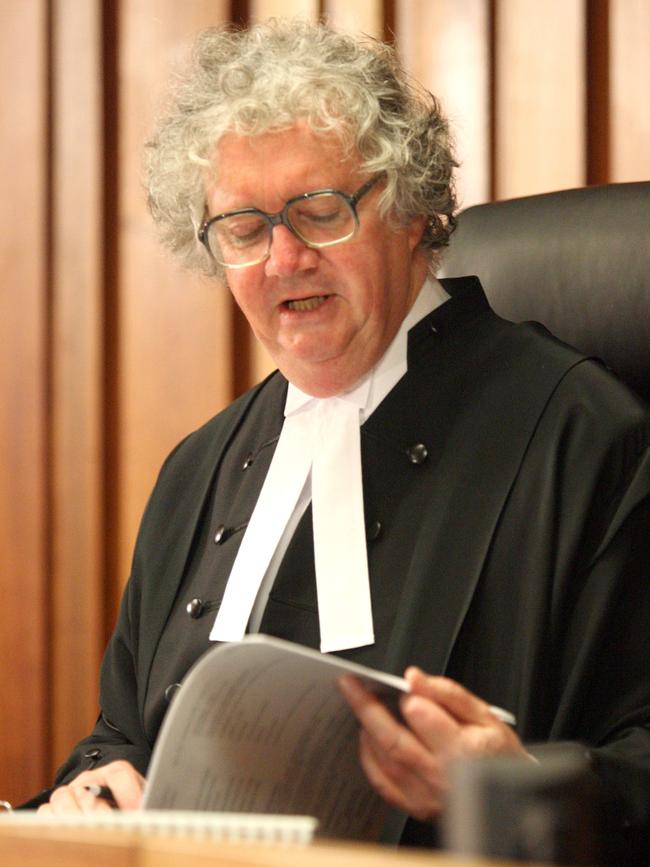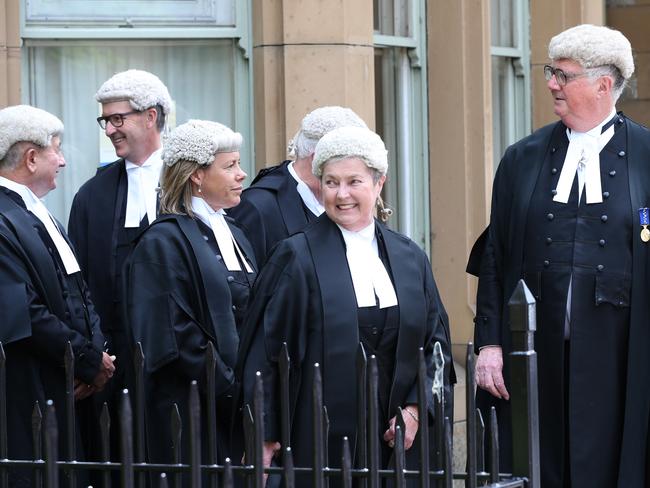The hunt is on for Tasmania’s new Chief Justice, with man at the helm reflecting on esteemed career
Chief Justice Alan Blow has spent almost a quarter of a century on the bench of Tasmania’s Supreme Court. With his retirement looming, he has reflected on his career – and the end of an era.

Police & Courts
Don't miss out on the headlines from Police & Courts. Followed categories will be added to My News.
A chapter of Tasmanian history will soon draw to a close, with the upcoming retirement of the judge at the Supreme Court helm.
Chief Justice Alan Blow, who will turn 75 in December, has spent almost a quarter of a century on the bench, presiding over some of the biggest Tasmanian cases in recent history – including the murder trial of Sue Neill-Fraser.
Speaking at the University of Tasmania’s Burnie campus earlier this month, Chief Justice Blow spoke about key cases he’d been involved in since he was admitted to the bar in 1987, plus issues like the importance of juries, miscarriages of justice, and the use of artificial intelligence in the law.
He responded to an audience question from former Crown Prosecutor Tony Jacobs, who suggested Neill-Fraser had not been given a fair trial.
“Juries get it right most of the time. Counsel are competent nearly all of the time. I think we have minimal numbers of cases of injustice, and governments can establish royal commissions and the like when they need to,” Chief Justice Blow responded.

He also disagreed with a previous judge’s firm belief that the jury system should be abolished.
“Just think about how the newspapers deal with judges when they don’t like their sentences,” he said.
“We’re pretty lucky in Tasmania. The Tasmanian newspapers aren’t as vicious as some of the ones on the mainland.
“(But) imagine what would happen if verdicts of judges were routinely attacked by newspapers who thought that people who had been acquitted should have been convicted. It would really reduce the public’s respect for our system of justice.”
Chief Justice Blow, who grew up in Sydney, said his dream as a boy had been to be a tram conductor.
But that dream was dashed when “they took the trams away” when he was just 11.

After working as an articled clerk in Sydney, Chief Justice Blow moved to Devonport and began his career in Tasmania’s unique “fused profession” of both barrister and solicitor.
He was appointed silk in 1995 before being appointed to the bench of the Supreme Court of Tasmania in 2000, and has served as Chief Justice since 2013.
Chief Justice Blow was part-time deputy president of the Australian Administrative Tribunal from 1993 to 2000, member of the governing council of the Australian Judicial Officers Association since 2000, and was president of the Law Society of Tasmania.
In 2018, he was appointed as an Officer of the Order of Australia for his service to the judiciary and the law.
“What will I miss most? Probably the intellectual challenge,” he said.

Next year, following his retirement, Chief Justice Blow hopes to work as an acting judge during the dry season in the Northern Territory.
Over the weekend, Attorney-General and Justice Minister Guy Barnett said expressions of interest were invited for the appointment of a new Tasmanian judge, and the new Chief Justice.
He also thanked Chief Justice Blow for his “commitment, service and work to the Tasmanian people”.
Prior to 2020, Tasmanian judges were required to retire when they turned 72.
Then Attorney-General Elise Archer quickly made moves to amend the law, with Chief Justice Blow serving an extra three years before his retirement, which will take place at the end of this year.





